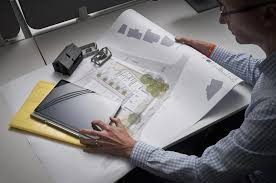
Introduction: The Allure and Challenge of Joining the Young Architects Program in USA
The Young Architects Program (YAP), founded by MoMA (Museum of Modern Art) and MoMA PS1, is one of the most coveted opportunities for emerging architects in the world. Launched in 2000, the program offers young architectural talent the chance to create an innovative summer installation in the heart of New York City at the iconic MoMA PS1, bringing their work to a global stage. As a platform for young architects, YAP has propelled many careers into the limelight, providing not only an unparalleled public exhibit but also significant professional exposure.
However, gaining a spot in the YAP is no easy feat. It is one of the most competitive programs for young designers, with only one project selected out of dozens of finalists. The application process is highly demanding, requiring not only creativity but also strategic thinking, a solid understanding of the design challenges, and the ability to manage a complex, fast-paced project from concept to realization.
This blog offers a comprehensive and critical guide to joining the Young Architects Program in 2025, exploring eligibility requirements, the application timeline, potential
challenges, and key strategies for success. By the end of this guide, aspiring architects will have a clear understanding of what it takes to succeed in this prestigious program and how to maximize their chances of transforming their innovative ideas into a reality.
Timeline: Stages of the Young Architects Program Application and Selection
Understanding the timeline of the YAP is essential to preparing a successful application. From initial submission to the installation of the summer project, here’s a breakdown of the process:
1. November–December (Year Before): Call for Nominations and Applications:
The call for applications and nominations is officially announced by MoMA PS1. At this stage, emerging firms, recent graduates, and junior faculty prepare their portfolios and submission materials. The announcement typically includes the official guidelines, eligibility requirements, and deadlines for the following year’s competition. This is the time when architects and firms begin conceptualizing their proposals.
2. January–February: Review by a Distinguished Committee
Once applications are received, a panel of experts comprising MoMA curators, prominent architecture professionals, and previous YAP winners begins reviewing submissions. The review process narrows down the field to about five finalists, who are invited to move on to the next stage. During this phase, the committee evaluates each submission based on criteria such as creativity, feasibility, and relevance to the program’s goals.
3. March: Finalist Presentations
The finalists are asked to present their proposals in person to the jury. This includes conceptual sketches, models, and material samples that represent the proposed installation. Finalists may also be required to discuss the technical aspects of their design, including the choice of materials, structural feasibility, and how their project will engage the public. The jury uses this presentation to assess the finalists’ ability to communicate their design intent and the practicality of the installation.
4. April: Selection of the Winner
After the presentations, the jury selects the winner, whose design will be constructed and exhibited at MoMA PS1 during the summer season. This is followed by a public announcement, along with media coverage that highlights the winner and their design. The winner also receives a budget to realize their project, which includes funds for materials, labor, and installation logistics.
5. June–September: Installation and Exhibition
The winning design is built on-site at MoMA PS1, where it is exhibited during the summer months. This period allows the public to interact with the installation, bringing additional exposure and engagement to the work. The installation remains on view for several months, showcasing the winner’s innovative approach to design. This exhibition provides unparalleled visibility and acts as a major career milestone for emerging architects.
Eligibility and Application Requirements
The Young Architects Program focuses on emerging talent, particularly those who are still early in their careers and pushing the boundaries of architecture. Understanding the eligibility criteria and application requirements is key to crafting a successful submission.
1. Emerging Talent Focus
The program is specifically geared toward recent architecture graduates, junior faculty members, and young firms. Typically, applicants should have less than ten years of experience in the field. The program seeks innovative young designers who have demonstrated the potential to think critically and creatively about architectural design.
2. Portfolio Submission
To apply, architects must submit a comprehensive portfolio showcasing their past work. The portfolio should highlight creativity, technical skills, and the applicant’s ability to approach architectural challenges with innovation. Strong portfolios typically include a mix of conceptual designs, built works, and experiments that demonstrate a clear narrative of the architect’s evolving style and design philosophy.
3. Original Installation Concept
The core of the application is the design proposal itself. The installation must be an innovative and interactive outdoor design that incorporates elements such as shade, seating, water features, and art installations. It must blend architecture, art, and public engagement, offering a functional, community-oriented space. Proposals are often judged on their originality, their potential to engage the public, and how they respond to the site’s specific conditions.
4. Nominations
Applicants can self-apply or be nominated by a professional in the field. Nominations from established architects or academic institutions often carry more weight. This process ensures that the competition attracts highly qualified candidates, while also making the opportunity accessible to young firms and recent graduates without an established portfolio of high-profile work.
5. Commitment
If selected, the winner must manage the design, development, budget, material sourcing, and construction logistics within a relatively tight timeline. This involves coordinating with contractors, suppliers, and the MoMA PS1 team to ensure the project meets the required standards and is completed on time.
Critical Reflections: Challenges and Concerns
While the Young Architects Program is an exciting opportunity, the competition process is not without its challenges. Below are some of the key difficulties applicants should be aware of:
1. Highly Competitive
The selection process is intensely competitive. Hundreds of applicants vie for the prestigious chance to design the installation at MoMA PS1, but only one winner is selected. The finalists are often exceptional in their creativity and vision, meaning the process of standing out can be daunting. For applicants, this means that preparation is critical, and only the most refined proposals have a chance at winning.
2. Resource Intensive
The application process requires a significant investment of time, effort, and money. Applicants need to craft professional portfolios, prepare detailed proposals, and possibly create physical models or prototypes. For young firms or recent graduates, this can be an
overwhelming task. As such, applicants may need to invest in material costs and collaboration with specialists in order to submit a high-quality proposal.
3. Subjectivity of Judging
The judging process, while rigorous, remains somewhat subjective. What resonates with the jury one year might not necessarily be favored the next. Artistic preferences, conceptual leanings, and the current cultural climate all play roles in the selection. This makes success partly dependent on how well the jury perceives your design, which may not always align with your own vision or expectations.
4. Accessibility Issues
Smaller or less-funded firms, as well as independent architects, may face difficulties in meeting the resource demands of the competition. The cost of building high-quality models, developing prototypes, and gathering the materials required for a submission can be prohibitive. Additionally, without institutional backing, it may be harder to put together the team of collaborators needed for the proposal, potentially putting less well-funded applicants at a disadvantage.
5. Career Impact Variability
While winning the Young Architects Program can provide tremendous exposure, the career impact is not always as guaranteed as one might hope. Some winners have gone on to receive lucrative commissions or significant career advancement, while others have found that the media attention didn’t translate into long-term job opportunities or recognition. The experience, however, can still serve as a powerful addition to a portfolio, opening doors to further projects and opportunities.
Insider Tips for a Winning Application
Given the competitive nature of the YAP, here are some insider tips to improve your chances of success:
1. Start Early and Research Past Winners
Understanding the kind of proposals that have been successful in previous years is crucial. Research past winners to see what worked for them. Pay attention to the aesthetic, conceptual, and functional aspects of their designs, as well as how they addressed social, environmental, and cultural contexts. This research can guide your own proposal, helping you identify trends that resonate with the jurors.
2. Build a Multi-Disciplinary Team
YAP projects are not purely architectural in nature—they also require skills in engineering, art, and materials innovation. Collaborating with experts from various fields can strengthen your proposal. For example, working with artists, landscape designers, or structural engineers can elevate the functionality and aesthetics of your design, ensuring that it is feasible as well as visionary.
3. Demonstrate Community Relevance
While creativity is key, proposals that address social or environmental issues often stand out. Consider how your design can engage the community, address local needs, or reflect important cultural or environmental considerations. For example, proposals that incorporate elements of sustainability, social responsibility, or inclusivity may resonate more with the jury.
4. Present Visual and Physical Prototypes
Strong visual communication is essential in a competition like YAP. While conceptual sketches and digital models are important, physical prototypes or mockups can provide an added dimension to your submission. These prototypes help the jury better understand your vision and its real-world application, making it easier for them to visualize how your project will come to life.
5. Seek Mentorship
Leverage the experience of MoMA alumni, past YAP winners, or faculty members who have experience with the competition. Their guidance and review can help refine your proposal, ensuring it is as compelling and professional as possible. Mentorship can also provide critical feedback on your project’s direction, helping you stay focused on the essential aspects of the proposal.
6. Tailor Communication
Make sure your submission is clear, concise, and evocative. While the technical details are important, jurors are also looking for passion, innovation, and the ability to communicate a vision. Be concise in your narrative but ensure that your design’s uniqueness and its impact on the public are communicated effectively.
Conclusion:
The Young Architects Program offers an incredible opportunity to showcase your talent on a global stage. It’s a platform that can dramatically shape your career as an emerging architect. However, the process of applying and winning the competition is complex and competitive. Success demands more than just creative ideas it requires strategic preparation, solid resources, and the ability to communicate your vision effectively.

